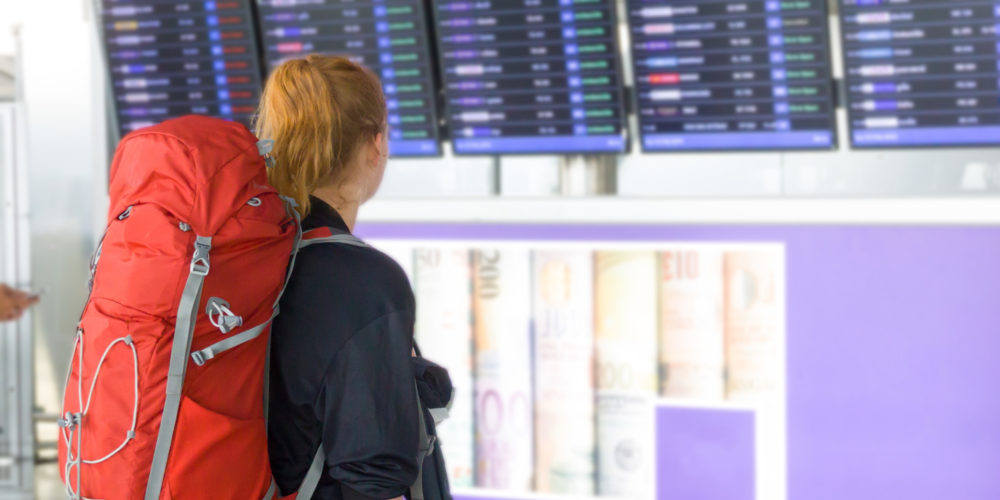Traveling with gear

In just a few weeks, the Adventure Untamed team will be guiding a trip in Escalante, and we are flying with gear. So, this month, guide John Benincasa is sharing his tips for traveling with gear:
Air travel has always been the necessary evil that enabled us to get from home to that special destination. For straightforward trips, it’s an unavoidable step often fraught with anxiety. Deciding what to pack has become increasingly stressful in an age of cramped planes, sudden flight changes, and hefty baggage fees.
Adventure travel, which requires gear to be packed along with the usual stuff, can add to the stress. It means viewing our luggage a bit differently.
Since gear-intensive activities simply cannot happen without that specific equipment, lost luggage can mean the end of a magnificent adventure before it even starts.
Fortunately, most bags arrive at the right destination without incident, but lost bags are not uncommon, and once we check our bags and watch as they disappear on the conveyor belt, it is out of our control.
Besides crossing our fingers and praying they will emerge on another conveyor in some faraway location, there are things we can do to increase the chances they will be there, or at least salvage a trip should something go wrong.
When booking a flight
Consider the type of ticket. If possible, try for a nonstop or direct flight. Switching planes adds another step where your bags can get misdirected.
There are so many classes of tickets now – it’s important to look at the fine print. The price of super-economy tickets may be tempting, but some airlines ask those ticket holders to forego even the overhead bin and take onboard only a small under-seat bag. You may want that extra carry-on. (See “When checking bags” section below)
Consider trip insurance. Lots of different options, including lost luggage, trip cancellation, illness etc. are available. If a trip goes completely south, recouping money will at least take some of the sting away. Gear-intensive trips, like mountaineering, can easily have thousands of dollars worth of gear in bags. It’s nice to have some peace of mind should they disappear forever.
When checking bags
Checked bags are almost unavoidable on adventure trips. Be mindful of what and how you pack. Hardshell luggage is great for protecting fragile items, but heavy-duty duffle bags made of durable material with burly zippers are often better-suited for oversized loads. Wrap fragile things in clothes and put them in the middle. Tougher stuff should go toward the outside. Cover any sharp points (ice axe, crampons) to avoid punctures. If you are traveling with a backpack you need to check, consider putting it into a cheap duffle bag – that will ensure that the straps are contained and won’t get caught on anything.
Be aware of restrictions and regulations. Know what can be carried on and what must be checked. Know what is not allowed at all. Camp stoves and empty fuel bottles are allowed if prepared properly. Fuel canisters are not allowed at all. Same for bear spray. Check the TSA website for specifics. When packing gear that may be questioned, include a copy of the TSA regulations in the bag (checked and carry-on). Some TSA agents may not be fully aware of the regulations, and a copy may come in handy if there is a discussion. I returned home to find a note from the TSA in a checked backpack indicating that they had gone through it.
Consider any piece of gear that is absolutely essential to the trip, such that if it went missing it would jeopardize the trip or at least cause big problems. Ask yourself whether that item(s) can be carried on rather than checked. This is where that extra carry-on comes in handy (see “When booking a flight” section above).
Finally, be conscious of weight. Fifty pounds is a heavy bag, and staying under that limit will save money and will be much easier to handle. A carry-on that acts as a backpack will free up your hands. If traveling with a partner, swap out items between you to stay under the limit. Also, the extra price of a bumped-up ticket may be offset by a free carry-on and get you a better seat to boot. Check what the airline offers.
Have a Plan B
Know what’s available to you at your destination should your gear not show up in a timely manner. That means being aware of rental options, including their locations, hours, and whether they have what you need. Here in the U.S. there are usually plenty of options, but traveling abroad may mean having to search a bit. Doing your homework before you leave will save a desperate scramble upon arrival. Remember to reach out to any contacts you may have! They are usually happy to help.
Have a Plan C
In the unlikely event that you arrive at your destination unable to do what you had planned for, consider what else might be available to you. There are often many different activities centered around a particular destination. Look for something different, and make an unfortunate turn of events into an opportunity to do something completely new. Research these possibilities before you leave, just in case. With a little research and prep, no trip needs to be a complete washout.
Looking for adventure travel? Check out the trips we are guiding this fall and winter!

